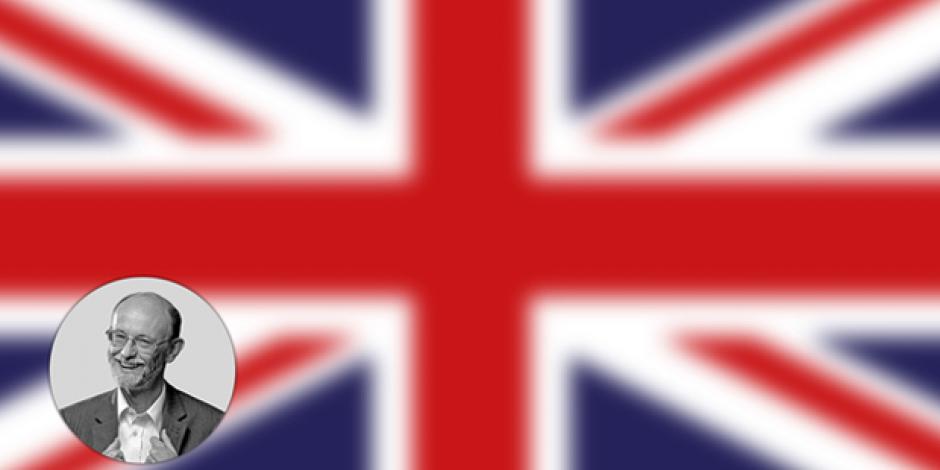Starten Sie den Audio-Text
Mit dem Audio-Player können Sie sich den Text anhören. Darunter finden Sie das Transkript.
Transcript: Stationary at the station
In the summer of 2016, the British Labour leader, Jeremy Corbyn, was involved in a bit of a scandal. You see, Mr Corbyn wants to renationalize British trains. He thinks a “People’s Railway” could offer better and more efficient services along with cheaper tickets. To support this argument, he released a video in which he was forced to sit on the floor of a Virgin train because he couldn’t find a free seat.
The train company replied with a video from that day showing Corbyn passing through a carriage of empty seats. Of course, the company failed to mention that these were reserved seats. In the end, neither side came out of it looking good. What became clear, though, is that many people are unhappy with the train service in the UK. In Britain Today, Colin Beaven points out that the service wasn’t all that good before privatization, either.
When you’re waiting for a train at one of London’s big stations, what can you do to kill time? You could look at the statues — like the one of Sir Nigel Gresley at King’s Cross. King’s Cross is the terminalEndstation, Endhaltestelleterminal station at the end of the line from Edinburgh, and Sir Nigel designed beautiful locomotives, like the Flying Scotsman and the mallardStockenteMallard.
Why choose the name “mallard”, a type of duck? Sir Nigel liked ducks. He had lots of them. At one point, there were plans to include a duck as part of his statue, but in the end, it was felt to be too frivolousalbernfrivolous.
Britain’s railways continue to get busier and busier, but their passengers don’t get any happier. They complain about the high cost of price of the fareFahrpreisfares and the low standard of service.
Certainly, the service could be better. But it wasn’t great in the days before privatization either. In the 1990s, I remember a confused American tourist who was travelling to Paddington — another of London’s terminal stations. The lady clearly didn’t know that, however.
“Excuse me,” she asked the guard. “Does this train stop at Paddington?”
“Well, God help us if it doesn’t,” he replied. Nowadays, you’d get a friendlier answer. In fact, today’s guards never stop telling you where you’re going.
The service wasn’t great when I used to wait at Victoria — yet another London terminus — for the boat train to Dover. If you were on your way to the ferryFähreferries heading for France or Belgium, you’d have to wait ages for someone to open the gates to the platform.
So lots of exhaustederschöpftexhausted passengers used to sit on the ground with their luggage. Once, they left a tiny gap in the solid sea of suitcases. Into this tinywinzigtiny gap, something fell from the back end of a pigeonTaubepigeon that was sitting up in the roof.
Was the pigeon to show offangebenshowing off? Did it think this was the height of skill? Or possibly the height of bad luck? either wayso oder soEither way, it reminds me that the railways used to have pigeons as well as mallards. Not everything was perfect.
What about the tradition of having to wait for platforms to open? It’s still alive and well, no doubt because the stations are so busy. Waterloo — another London terminus — is Britain’s busiest, with almost 100 million passengers a year. With so many trains competing for platforms, it must be hard to say in advance which one gets which.
Or is it just that it’s fun to make passengers wait, and then watch them to burst into lifezum Leben erwachen, in Schwung kommenburst into life like greyhoundWindhundgreyhounds at a race track when they find out where they have to go to catch their train?
Whatever the reason, London’s big stations are full of passengers standing absolutely motionless, holding their Starbucks coffee cups and watching the departure boards. They look like the living statues that entertain tourists on the streets of big cities. Perhaps they really are living statues, attempting to make money as entertainment for visitors. If you tried putting coins in their coffee cups, you’d no doubt find out.
Related article
You can also read the column by following this link:
Neugierig auf mehr?
Dann nutzen Sie die Möglichkeit und stellen Sie sich Ihr optimales Abo ganz nach Ihren Wünschen zusammen.



